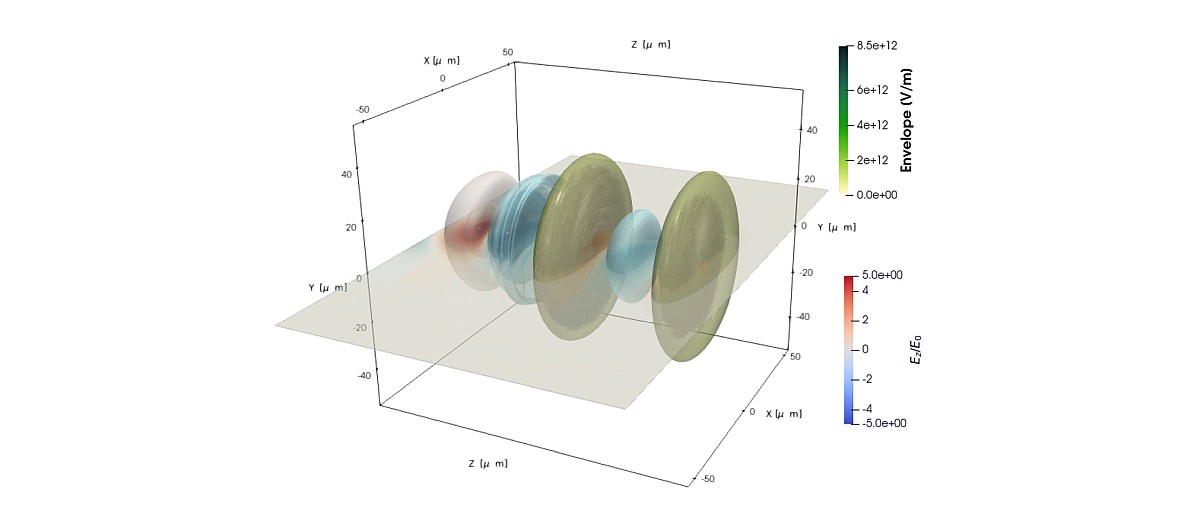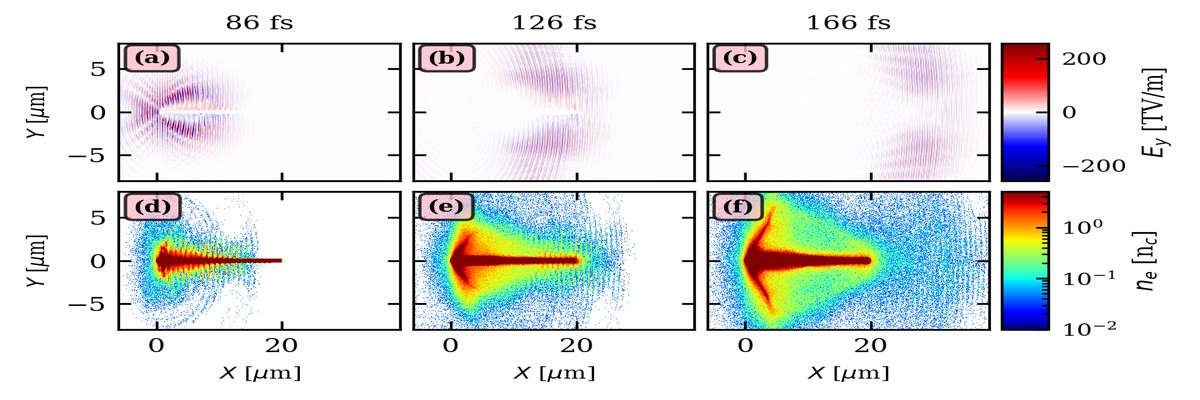Paolo Tomassini, Federico Avella, Nasr Hafz, Luca Labate, Vojtech Horny, Szabolcs Toth, Domenico Doria, Leonida Gizzi [ https://www.nature.com/articles/s41598-025-24672-7 ]
By means of theory and high-fidelity Particle In Cell Simulations, we demonstrated for the first time that tunable in length electron beams with record short duration (down to 350 attoseconds) and ultra-high quality can be obtained with standard 200-300 TW Ti:Sa laser systems and the Laser Wake Field acceleration based on a ReMPI scheme [1]. Extremely cold > 2GeV electron beams, with transverse emittance of 0.09 mm mrad and projected energy spread of 0.15% can be generated in this way.
A novel methodology to split the laser pulse into two resonantly delayed pulses that drive the plasma wakefield had been proposed and accurately simulated with a novel laser-to-PIC simulation tool, also introduced by the authors. The stable generation of the two collinear pulses is obtained via the insertion of a multi-ring delay mask structure, that generates two resonantly delayed multi ring structures in the collimated beam, but remarkably two identical quasi-gaussian (TEM00) near the focal plane.
The wakefield structure exhibits the presence of a resonance amplification, thus allowing for the onset of a quasi-blowout regime with a relatively low pulse(s) intensity, thus enabling for the action of a dedicated ionization pulse that extracts the electrons from an Argon [2] dopant and places them in the correct phase of the wakefield.
The final beam quality is compatible with the extremely demanding one required to drive Free Electron Lasers, with which single or few-spikes coherent X-ray radiation in the Water Window can be generated. Among the possible other application of the ultra-compact electron beam, the generation of 10'MeV quasi-monochromatic gamma beams with Thomson/Compton backscattering, direct 100's attosecond long electromagnetic probing and staging to reach 100's GeV or more energy are currently envisaged.

Fig. 1: Conceptual setup of the LWFA scheme



